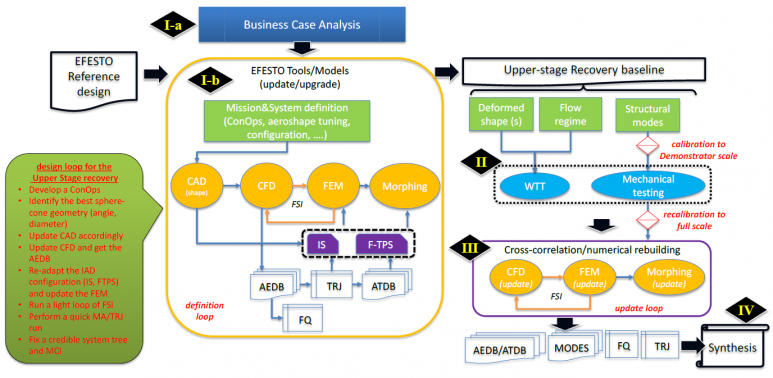About EFESTO-2
EFESTO-2 will contribute to:
- the expansion of commercial space transportation offers and services because the maturation of Inflatable Heat Shields will allow their applicability to recovery and reuse launcher’s stages
- execution of design and performance studies as well as business cases analysis with ad-hoc work packages
- maturation of relevant technologies up to TRL 5-6 through a ground test campaign
- matching the EU Green Deal objective because the maturation of Inflatable Heat Shields technology can replace propulsion devices in end-of-life disposal/de-orbiting of space systems, hence reducing the environmental impact of space debris and chemical propulsion.

The EFESTO-2 project technical effort will be organized around the following main elements:
- a business case analysis (BCA) with the objective to identify the most appealing use-case application and feed the subsequent design study for a reference mission/system. The BCA will range from the possible application of IAD to the implementation of the re-entry phase of space transportation as recovery and reuse of launcher’s stages, recovery of ISS Cargo system and delivery of its payloads, and recovery of reusable satellites, etc.
- a design definition with the objective of defining a mission operation concept along with a reference system configuration to characterize the operative environment for the inflatable heat shield and to properly feed the testing effort in the second half of the project
- a test campaign with the objective of covering the lack of knowledge with respect to the EFESTO project achievements (like NASA was doing in HIAD program) focusing on:
- the aerodynamic characterization at meaningful flow regime through cold-flow wind tunnel testing of sub-scaled models to investigate the critical phenomena of dynamic and static stability of capsule-like bodies with a focus on deformed shapes;
- the IAD mechanical characterization by ground testing of the 1:2 scale demonstrator test-article produced within the EFESTO project, to further explore structural behaviour through modal survey, stiffness and deformation measurements, morphing observation and materials characterization;
- a numerical-experimental cross-correlation with the objective of comparing test results with numerical models to improve the predictive capability at materials, structural and aerothermodynamics levels;
- a technology assessment with the objective of identifying the reached TRL and completing the definition of a roadmap for near-mid-term development in the field of IAD.
